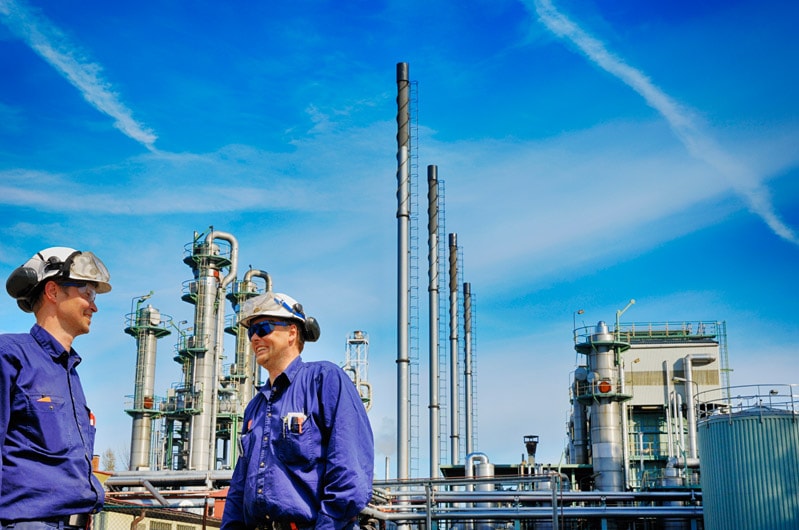
An aircraft and avionics technician's job is very demanding. The aerospace and the avionics industry supports almost 270,000 jobs and generates $43.1billion in economic activity every year. This occupation requires knowledge of all aspects of aviation and proficiency in the use and care of tools and equipment. Other duties include routine and FAA-required inspections of aircraft.
There are several types of jobs available for aircraft and avionics equipment mechanics or technicians. In the United States, the largest sector employs the majority of these professionals. Specifically, over half of all aviation mechanics work in the scheduled aircraft transportation industry. Federal government and the aerospace products and parts manufacturing sectors are other employers. A small number of these mechanics work for non-scheduled airlines.

You can expect a rewarding career as an avionics technician or mechanic in the aircraft and avionics equipment fields. You can take the FAA certification test once you have finished your program. These certifications will allow you to work in a wide range of aviation jobs, including those at major airlines and repair facilities. These positions can lead to a high-paying job, so it's worth looking into this career path.
In addition to earning a certification in avionics equipment, avionics technicians also maintain radio and auto-pilot flying systems. A certification as an Avionics technician can be earned and you may also become licensed as an A&P mechanic. Avionics technicians have a high level of skill and are highly valuable. The industry is projected to grow by 5% over the next decade.
This job requires high levels of concentration, attention, and physical and psychological strength. Technicians often work under high pressure and must adhere strictly to safety rules. Technicians often lift up to 70 pounds and are forced to stand in awkward and precarious positions. In certain industries, there may be unwritten standards which are not covered in engineering documents. It is therefore important to be aware of these risks. The aircraft may be damaged by technicians who work under extreme pressure.

Avionics technicians are trained in the maintenance, repair and installation of electronic instruments for planes. In addition, they maintain radar systems, navigation aids, and radio communication devices. As the use of digital technology increases, the time spent on maintaining computer systems increases. The mechanic must hold an Airframe rating in order to have a license for most avionics. Additional licenses might be required to work with aircraft.
Mechanics also perform maintenance and inspections of aircraft. A mechanic is responsible primarily for the maintenance and repair of aircraft. Some mechanics focus on preventative maintenance. This is what makes airplanes safe to fly. They inspect aircraft engines, landing gear and instruments. Maintenance records are also kept by mechanics. Technicians are also trained to troubleshoot and fix electrical systems.
FAQ
What are the jobs of electrical engineers?
They create power systems for human use.
They are responsible of designing, building and testing all types electrical equipment that is used by residential and commercial customers.
They plan and direct the installation of these systems.
Electrical engineers design and install electronic devices, circuits, and components that convert electricity into useful forms.
What does a typical day in the life of an engineer look like?
Engineers spend a lot of time on projects. These projects might include improving existing products or developing new ones.
They may be involved in research that aims to improve the environment.
They might also be involved in developing new technologies such smartphones, computers, planes, rockets and other mobile devices.
Engineers must use their imagination and creativity to complete these tasks. They must be able to think outside the box and come up with innovative solutions to problems.
They will need to sit down and brainstorm new ideas. They will also have to test their ideas and prototypes using tools such as 3D printers, laser cutters, CNC machines, computer-aided design software, and other equipment.
Engineers must communicate effectively with others to express their ideas. They must write reports and presentations to share their findings with colleagues and clients.
They will need to use their time efficiently in order to do the maximum possible work in the least amount of time.
No matter which type of engineering you choose to do, you will need to be creative, innovative, analytical, and well-organized.
Do I need a degree to become an engineer?
Engineering does not require a bachelor's Degree. Employers prefer candidates with degrees. To get your degree, you can take some online classes if you don’t hold one.
What do civil engineers do for a living?
Civil engineering is the creation and construction of structures like roads, bridges or buildings, dams or tunnels, as well as other large-scale projects. It covers all aspects related to structural engineering such as building materials, foundations geotechnics hydraulics soils, safety analysis, environmental impact assessment and traffic management. Civil engineers ensure that your project is both cost-effective, and environmentally responsible. They have to ensure that the structure will be safe and lasts.
They also assist in planning and implementing public work programs. They might supervise the construction and planning of roads, bridges, or tunnels.
Elon Musk is what kind of engineer?
He is an inventor who enjoys thinking outside the box.
He is also a risk-taker.
He's not afraid to experiment with new ideas and is open to taking risks.
Elon Musk, a great example of someone who thinks and acts differently to others, is a great example. He doesn’t believe what everyone else is saying. He instead tests his ideas and decides if they work. If they didn't work, he changes them until he finds something that works. This helps him to become more adept at solving problems and creating innovative ideas.
What does it mean to be a mechanical engineer?
A mechanical engineer is responsible for designing machines, tools, products, processes, and vehicles that are used by people.
Engineers in mechanical engineering use mathematics, science, and engineering principles for practical solutions to real-world problems.
A mechanical engineer can be involved in product design, production, maintenance quality control, research, testing or sales.
Engineering What?
Engineering can be described as the application and production of useful things using scientific principles. Engineers use their knowledge of mathematics and science to design and produce machines, vehicles.
Engineers are involved in many areas, including research and development, production maintenance, testing, quality assurance, sales, marketing management, consulting law, politics, finance and human resources administration.
An engineer has various responsibilities, including designing and building products, systems, processes, and services; managing projects; performing tests and inspections; analyzing data; creating models; writing specifications; developing standards; training employees, supervising workers, and making decisions.
Engineers can specialize in certain fields, such as mechanical, electrical, chemical, civil, architectural, computer, biomedical, manufacturing, construction, aerospace, automotive, nuclear, petroleum, mining, forestry, geology, oceanography, environmental, and more.
Engineers may choose to concentrate on specific areas of engineering such as aeronautics or biotechnology.
Statistics
- 14% of Industrial engineers design systems that combine workers, machines, and more to create a product or service to eliminate wastefulness in production processes, according to BLS efficiently. (snhu.edu)
- 2021 median salary:$95,300 Typical required education: Bachelor's degree in mechanical engineering Job growth outlook through 2030: 7% Mechanical engineers design, build and develop mechanical and thermal sensing devices, such as engines, tools, and machines. (snhu.edu)
External Links
How To
How to make Engineering Drawings: Letter Writing
Engineering drawings consist of engineering sketches (also known as technical drawings) and architectural drawings. The first describes the product's physical features while the second shows how it should look. Both types contain detailed specifications, dimensions as well symbols and text. These documents are written by engineers in their own language. These terms can be used to refer to specific units of measurement or abbreviations. These terms are also known as engineering terminology. This article will explain their meaning.
A letter refers to a formal document sent by an individual/organization to another person/organization. It often includes a greeting or salutation, signature, date and closing remarks. Most people include a self introduction at the beginning of their letter. Some letters may have business details like legal agreements. Others may only have greetings and signatures.
Engineers use their professional experience to create a plan, design machines, build bridges, and draw diagrams. Engineers should use precise language to communicate their work. Technical terms refer to the product, process or materials used and their methods.
Engineers may use a variety of terms to describe things. For example, they use "ampere" to talk about electrical current. To measure mass, they use "kilogram per squared". These terms are called scientific numbers. They are called common names by other engineers, as they are widely used. Common names can be easier to remember and understand.
Technical terms are often abbreviated. An abbreviation refers to a longer word. The abbreviation "kW" is for kilowatt. You will recognize the term "KW" as kilowatt when you see it. You don't have to memorize the full name.
Engineers use many other acronyms and abbreviations in addition to technical terms. These are similar in abbreviations but can be made up of many words. Some examples include "IEC", DIN, and "ANSI." These are vital because they speed up communication.
Engineers don't always follow the standard spelling rules because they are using their jargon. They may spell out numbers with digits instead of using numerals. They may use different capitalizations than normal. Capitalization refers both to whether a word starts in capital letters or lowercase. Words that start with vowels are spelled differently than words that start with consonants.